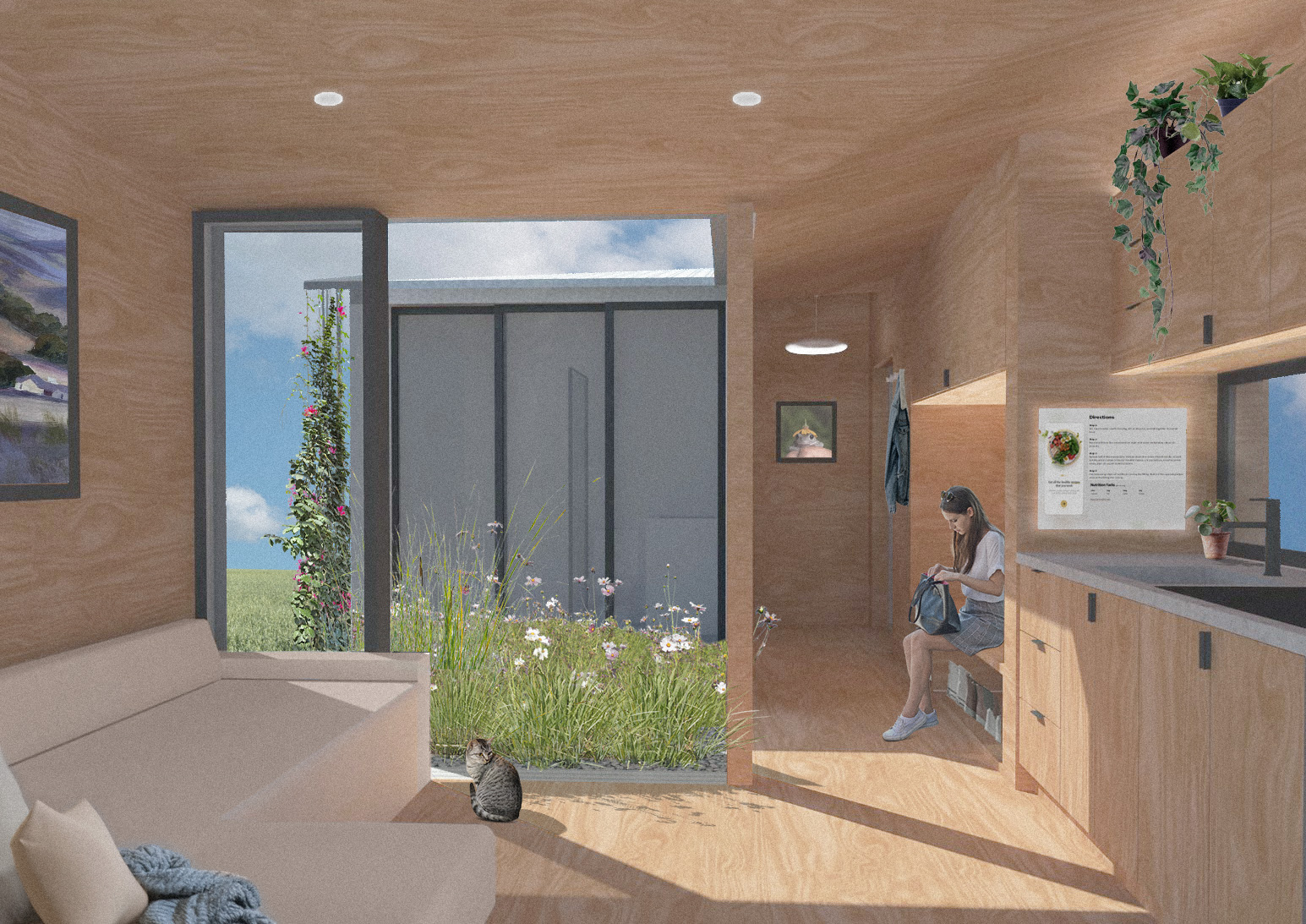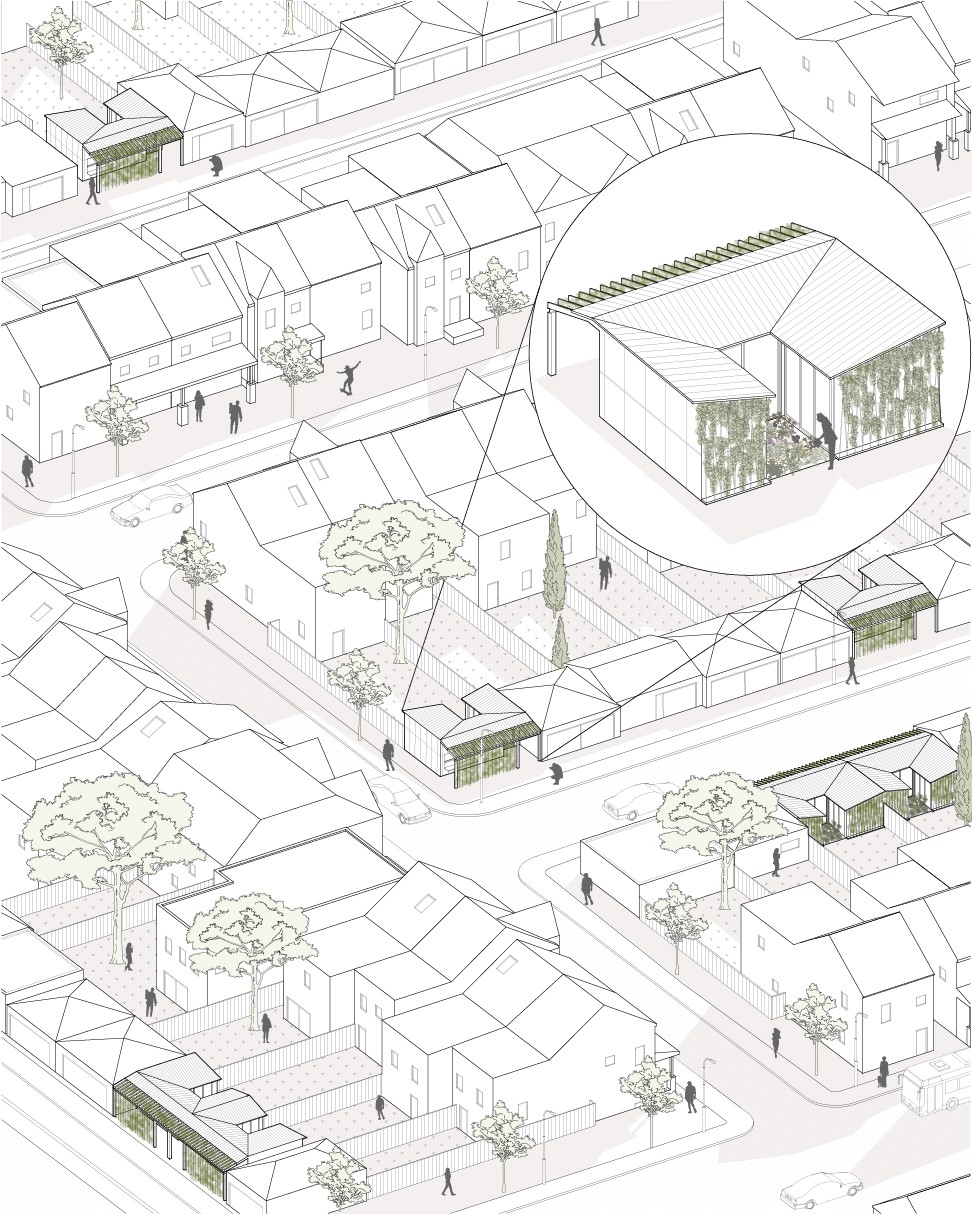UNDERGRADUATE
Odel Linetska— Christian Martinelli Memorial Award
![]()
Odel Linetska— Christian Martinelli Memorial Award

About the Award
For a student who demonstrates a passion for Building Science within Architecture and is a leader and consensus builder.
As of 2023, Toronto is widely recognized as one of the most expensive cities to live in, in North America, particularly for renters. One tool in addressing the housing affordability crisis is the introduction of laneway and garden homes. These small, self-contained housing units are constructed in the backyards of existing homes. The resulting alleviation of financial stress associated with high rents will also have a positive impact on mental health in the city. In creating a peaceful environment within a bustling city like Toronto, our design emphasizes the importance of considering occupant mental health. Our approach combines biophilic design, calm technology, and a Passive House-style building envelope, to foster a serene atmosphere. The biophilia is evident in the incorporation of plants as an essential part of the living environment. Calm technology refers to technological solutions that enhance users’ lives and provide essential information while remaining unobtrusive and minimally demanding. By reducing stress levels and enhancing user-friendliness, calm technology can contribute to improved mental health and overall well-being. Sustainable building practices too play a crucial role in promoting mindfulness and enhancing occupants’ overall comfort. Designing and constructing homes with sustainability in mind not only minimizes environmental impact but also creates a healthier and more comfortable living space. By incorporating features such as energy-efficient systems, high-performance building envelope, and natural lighting, our design encourages a more balanced and comfortable lifestyle.
As the lead of the project, completed during my co-op placement with Duncan Patterson Architecture and Katy Cao, I focussed on encompassing sustainability, energy efficiency, the use of low-carbon materials, and strategic drainage. The project was conceptualized using knowledge of the site, the deficiencies in housing typology, and the sustainability aspects mentioned above.
For a student who demonstrates a passion for Building Science within Architecture and is a leader and consensus builder.
As of 2023, Toronto is widely recognized as one of the most expensive cities to live in, in North America, particularly for renters. One tool in addressing the housing affordability crisis is the introduction of laneway and garden homes. These small, self-contained housing units are constructed in the backyards of existing homes. The resulting alleviation of financial stress associated with high rents will also have a positive impact on mental health in the city. In creating a peaceful environment within a bustling city like Toronto, our design emphasizes the importance of considering occupant mental health. Our approach combines biophilic design, calm technology, and a Passive House-style building envelope, to foster a serene atmosphere. The biophilia is evident in the incorporation of plants as an essential part of the living environment. Calm technology refers to technological solutions that enhance users’ lives and provide essential information while remaining unobtrusive and minimally demanding. By reducing stress levels and enhancing user-friendliness, calm technology can contribute to improved mental health and overall well-being. Sustainable building practices too play a crucial role in promoting mindfulness and enhancing occupants’ overall comfort. Designing and constructing homes with sustainability in mind not only minimizes environmental impact but also creates a healthier and more comfortable living space. By incorporating features such as energy-efficient systems, high-performance building envelope, and natural lighting, our design encourages a more balanced and comfortable lifestyle.
As the lead of the project, completed during my co-op placement with Duncan Patterson Architecture and Katy Cao, I focussed on encompassing sustainability, energy efficiency, the use of low-carbon materials, and strategic drainage. The project was conceptualized using knowledge of the site, the deficiencies in housing typology, and the sustainability aspects mentioned above.





